|
By Margo Kirchner Monday, June 17, is Wisconsin Women Lawyers Day, so proclaimed by Gov. Tony Evers to commemorate the 150th anniversary of the first woman's admission to the practice of law in Wisconsin. Lavinia Goodell was admitted to practice law at the Rock County Courthouse on June 17, 1874, following a bar exam conducted orally in a courtroom by a judge and senior lawyers. Milwaukee County will honor its women lawyers in a ceremony at 9 a.m. Monday in Room 200 of the Milwaukee County Courthouse. County Executive David Crowley and County Board of Supervisors Chair Marcelia Nicholson will recognize female deputy corporation counsel and court commissioners, the Milwaukee Justice Center director, and other female attorneys working for the county. In Rock County, a ceremony and short reenactment of Goodell’s admission to law practice is planned for 5 p.m. Monday at the courthouse in Janesville. Wisconsin Supreme Court Chief Justice Annette Ziegler is scheduled to speak, as are Dane County Circuit Judge Angela Bartell (retired), who is president of the Wisconsin Historical Society Board of Curators; State Bar of Wisconsin Executive Director Larry Martin; Green County Circuit Judge Jane Bucher; and Rachel Frost Starkey, a descendant of Goodell’s sister. Rock County Circuit Judge Barbara McCrory will preside over the ceremony. Milton Municipal Judge Kris Koeffler has coordinated the reenactment. A reception will follow at a Janesville wine bar. A committee of women attorneys has been working since mid-2023 not only to commemorate Goodell’s bar admission but also to celebrate Wisconsin women in the law more broadly. In addition to planning the Rock County event, members of the committee advocated for the governor’s proclamation and a series of articles in Wisconsin Lawyer magazine profiling current-day women in Wisconsin’s legal profession. Committee member Nancy Kopp says she came up with the idea of celebrating Goodell's admission to practice almost two years ago. “It dawned on me that there had not been a celebration in 1924 or 1974, 50 and 100 years after Lavinia became the state's first woman lawyer, and I thought it would be a shame to let the 150th anniversary pass without doing something to honor the occasion,” she told WJI. “It is very rewarding to be able to host a celebration of her admission to practice exactly 150 years after it occurred, in a courthouse that sits on the same site as the one in which she passed a bar examination,” Kopp said. Kopp first heard of Goodell in the 1970s and together with attorney Colleen Ball founded www.LaviniaGoodell.com, a website devoted to Goodell’s story and accomplishments. “I have been researching Lavinia for six years now and in addition to learning a great deal about her, I have also learned a great deal about the history of Janesville and Lavinia's contemporaries,” Kopp said. Kopp’s research into Goodell led to contact with descendants of Goodell’s sister, and several of them are expected at the Rock County Courthouse event. “While they were aware that Lavinia was Wisconsin's first female lawyer, they knew very few details about her life and have been very excited to see all the information that has come to life,” said Kopp. Committee members also have planned a special continuing legal education program on June 20 at the State Bar of Wisconsin’s annual meeting and conference. The program will discuss legal developments affecting women such as the right to practice law, the right for married women to have credit and own property in their own names, fair employment, and the Violence Against Women Act. Presenters include Wisconsin Supreme Court Justice Ann Walsh Bradley, Milwaukee County Circuit Judge Hannah Dugan, former State Bar President Diane Diel, Elizabeth Fernandez, Martina Gast, and Kopp. On Aug. 8, Old World Wisconsin will stage a reenactment of Goodell's supreme court battle with Chief Justice Edward Ryan for the right to argue before the Wisconsin Supreme Court. Back in 1874, attorneys were admitted to practice at the trial court level. Goodell found that practicing before the state Supreme Court was a separate matter. Her attempt to appeal a case to that court was rejected because of her gender. Goodell lost her petition to that court to proceed with her client’s appeal. Ryan infamously wrote in his decision denying Goodell’s application that “(t)he law of nature destines and qualifies the female sex for the bearing and nurture of the children of our race and for the custody of the homes of the world and their maintenance in love and honor. And all life-long callings of women, inconsistent with these radical and sacred duties of their sex, as is the profession of law, are departures from the order of nature; and when voluntary, treason against it.” Undeterred, Goodell found another route. She drafted a bill to prohibit gender discrimination in the practice of law, persuaded male legislators to pass it, and persuaded a male governor to sign it, opening the Supreme Court door to women. WJI profiled Goodell, her groundbreaking achievement, and her fight to argue before the Wisconsin Supreme Court in this “Unsung Heroes” post. Read more here. Earlier this year WJI called upon the Wisconsin Supreme Court and the State Capitol and Executive Residence Board to commemorate this 150th anniversary year with portraits of the court’s female chief justices and a bust of Goodell in the Supreme Court hearing room foyer. Goodell’s bust could be appropriately placed opposite Ryan’s. Text of Evers' proclamation: WHEREAS; over 9.400 women lawyers throughout Wisconsin pay a vital role in providing legal services to the public for law firms, private corporations, banks, insurance companies, nonprofit organizations, and government agencies; and WHEREAS; on June 17, 1874, Lavinia Goodell became the first woman lawyer in Wisconsin, pioneering a path for women in the legal profession across the state; and WHEREAS; despite facing institutional barriers, including being refused admission to practice before the Wisconsin Supreme Court in 1875 based on her gender, Lavinia Goodell demonstrated unwavering resilience and advocated for legislation that prohibited discrimination on the grounds of sex in admission to practice before the Wisconsin Supreme Court, which was signed into law in 1877; and WHEREAS; over the past 150 years, countless women have entered the legal profession, contributing to the richness, diversity, and fairness of the Wisconsin and national legal system; and WHEREAS; women lawyers in Wisconsin have been instrumental in driving significant legal reforms, advocating for the rights of the underrepresented, enhancing the delivery of justice, and fostering an inclusive environment that values diversity and equality within the legal community; and WHEREAS; the state of Wisconsin recognizes the lasting impact of women lawyers on the fabric of the state's legal system and emphasizes the importance of continuing to support and promote the advancement of women in the legal profession; NOW, THEREFORE, I, Tony Evers, Governor of the State of Wisconsin, do hereby proclaim June 17, 2024, as WISCONSIN WOMEN LAWYERS DAY throughout the State of Wisconsin, and I commend this observance to all our state's residents.
0 Comments
Images from the 1887 and 1891 University of Wisconsin Law School graduating class photographs. University of Wisconsin Law Library Digital Repository, Alumni Photos Collection. By Amy Rabideau Silvers In the history of Wisconsin law, it’s safe to say there has never been anything quite like Kate Hamilton Pier and her daughters. Their story began in the 19th century, decades before women won the right even to vote. Miss Kate Hamilton Pier, daughter of mother Kate Hamilton Pier, graduated from high school in Fond du Lac at 16 and wanted to study law at the Wisconsin State University in Madison, now the University of Wisconsin. Mrs. Pier decided to attend law school, in part to accompany her daughter but also to develop her own business skills. “She greatly desired that her daughters should begin business life under her personal supervision,” according to a sort of who’s who published in 1893 with the weighty title A Woman of the Century: 1470 Biographical Sketches Accompanied by Portraits of Leading American Women in All Walks of Life, edited by Frances Elizabeth Willard and Mary Ashton Rice Livermore. “She had started alone and knew what pioneer business undertaking meant for a woman,” the entry continued. “She wished her girls to benefit by her experience.” Mother and daughter completed the two-year law course in one year, graduating in 1887 with high honors. By 1891, two younger daughters, Caroline Hamilton Pier and Harriet Hamilton Pier, followed suit. Of the eight women then practicing law in Wisconsin, four of them were named Pier. They became, as a headline in The Ladies’ Home Journal declared in 1892, “A Law Firm of Women.” That was just the beginning. “Besides practicing law, the Piers also successfully advocated for legislative changes that expanded opportunities for women,” said an article in Wisconsin Lawyer, published by the State Bar of Wisconsin. “One such accomplishment was to secure statutory amendments that removed bans prohibiting women attorneys from appointments as court commissioners.” The change cleared the way for Mrs. Pier to be appointed Milwaukee County circuit court commissioner in 1892—the first woman to serve as a judicial officer in the United States. The Wisconsin Lawyer article, written by Milwaukee County Circuit Court Judge Hannah C. Dugan, noted that it would be 44 years before a Wisconsin woman was appointed to serve as judge by a governor, and 78 years before a woman was elected. Daughter Kate was involved in several state Supreme Court cases, writing one brief soon after law school graduation and appearing with her father, attorney C.K. Pier. In 1889, daughter Kate—under the name Kate H. Pier—became the first woman to argue before the Wisconsin Supreme Court. She won that case and later others. In 1894, she became the first woman to argue before the U.S. Court of Appeals for the Seventh Circuit in Chicago, also a victory for her client. The four Piers were among the first 20 women admitted to the U.S. Supreme Court bar, though none of the Wisconsin women argued before that court. To further their feminist mission, “these first twenty women began to move each others’ applications for admission to the Supreme Court bar,” wrote Mary Clark in “The First Women Members of the Supreme Court Bar, 1879-1900." The younger Kate was part of that process, successfully moving to admit her mother and sisters to the U.S. Supreme Court bar. “Regardless of their aspirations to practice in the Supreme Court, these women were motivated to join the bar at least in part by their commitment to furthering opportunities for women. … Their roles as ‘first women’ in the law—attending and establishing law schools, holding positions within the legal profession previously closed to women, and joining bars—reflected and refined their consciousness of breaking down barriers for women in the legal profession. For them, joining the Supreme Court bar was another in a series of steps towards eliminating impediments to women’s participation in the legal profession.” A matter of appearances For its part, The Ladies’ Home Journal observed that the Piers were all “feminine” women who had lost “none of their womanly qualities.” Mrs. Pier was described as a handsome woman whose face “indicates a strong and sweet character, which would temper justice with mercy.” “Miss Kate is very beautiful,” the article continued. “It may be of interest to feminine readers to know that Miss Pier wore, when she plead and won her first case at Madison, a pretty black silk dress, brightened with a bit of color at her throat. It must have been a strange scene, when five most ‘potent, grave and reverend seigniors’ listened to a slip of a girl as she plead her case, and plead it well and with convincing power.” Caroline and Harriet, new members of the family law firm, were also described as pretty girls, “at whom one gladly looks twice.” Photographs of the September 1892 edition of The Ladies' Home Journal by Amy Rabideau Silvers. Indeed, it was not only the ladies’ magazine that covered matters of personal appearance during court appearances. The Milwaukee Daily Journal, reporting in 1889 on the younger Kate’s Wisconsin Supreme Court appearance, headlined one item “Raving Over a Lady Attorney.” “She is a beautiful girl, little over 20 years of age, a brunette, with bewitching eyes and very heavy lashes, but her striking feature is her splendid black hair, which falls nearly to the floor in a massive braid,” it read. Nowhere in that hundred-plus-word report did it mention the name of the case or other legal details. The Milwaukee Journal report on her case before the Court of Appeals did only slightly better, at least noting the case in question. “For several hours she compelled the attention of Judges Woods, Baker and Seaman, who sat in begowned dignity while Miss Pier expounded law principles,” it recounted. “The fair pleader wore a tightly-fitting gown of black velvet, with a big American Beauty rose pinned on her breast. The case was a personal damage suit against the Crane Elevator company, which Miss Pier won for her client in the lower court, but which the company appealed.” The appeals court upheld the verdict in Crane Elevator Co. v. Lippert. Kate’s client was a 15-year-old employee of the Western Union Telegraph Co., seriously injured after he fell navigating a dark hallway—no gas jets were lit—where the elevator company had left components during a replacement project. Early family life Colwert K. Pier (aka C.K. Pier), was born into a Fond du Lac County pioneer family. His future wife, Kate Hamilton, was born in Vermont in 1845 and later grew up in Fond du Lac, where she taught for three years after graduating high school. “Her first job was teaching school in the town of Empire. Here she received her board and $5 a month,” according to an obituary after her death in 1925. She next taught in the Fond du Lac schools, where high post-Civil War inflation helped push her wages to $22.50 a month. C.K. returned to his law practice after serving in the Union Army, and the two married in 1866. After the death of her father, Mrs. Pier began handling the estate left to her and her mother, which led to others asking her help on real estate matters. “Inheriting an estate from her father while she was still young, circumstances developed Mrs. Pier into one of the pioneer business women of Wisconsin,” an obituary said. “She had training in real estate in her father’s office … and in the bank and law office in which her husband was interested.” So when her oldest daughter wanted to attend law school, Mrs. Pier had reason to think a law degree could be useful to her, too. The Piers move to Milwaukee After graduating, the women returned to Fond du Lac and began practicing law. In 1888, the Pier family moved to Milwaukee, a more likely spot to support their burgeoning family of lawyers. Daughter Kate worked in the Wisconsin Central Railroad’s law department for a year before joining the family firm. C.K. died in 1895. The Pier women continued to practice. Mrs. Pier’s official duties as court commissioner came to include officiating at the weddings of daughters Caroline and Harriet. The elder Kate died in Fond du Lac at the age of 80. Daughter Kate married railroad contractor James Alexander McIntosh in 1901, moving to New York City and quitting her law practice. After her husband’s death in 1916, she returned to Fond du Lac, where she assumed management of the family’s real estate and was again involved in the legal community, including the Wisconsin Bar Committee on Women Lawyers. She died in 1931. Caroline Hamilton Pier married attorney John Roemer in 1897. As a young lawyer, she specialized in maritime and admiralty law. She died in 1938. Harriet Hamilton Pier specialized in real estate law and argued before the Wisconsin Supreme Court. She married Charles G. Simonds, an electrical engineer, in 1905, and later lived in Rhinelander. “There is probably no woman in the state who has a better idea of the lands of northern Wisconsin than Mrs. C.G. Simonds … who, although residing in Milwaukee, spends much time in the wilds of the north,” reported The Milwaukee Sentinel in 1919. “She is also considered an expert in judging lands and her advice is frequently sought.” An obituary in 1943 called her a pioneer timber cruiser (riding trains to estimate timber value), conservationist, philanthropist, and, of course, one of Wisconsin’s first women lawyers. All were “demonstrating most clearly that they are qualified to rank with men in the learned and honored profession of law,” opined The Ladies’ Home Journal article. “It is not probable that any one of these young ladies is unfitted for a home because she has identified herself with an unusual calling for a woman. Only a few years ago, if a woman found it necessary to work for a living, as she often did (apparently suffering both the curse of Adam and Eve) there was no career open to her save school-teaching or dress-making. Now, as a progressive woman says, ‘she can do anything where her petticoats do not catch in the machinery.’” This project is supported by grants from
Wisconsin Justice Initiative recently asked the Wisconsin Supreme Court, director of state courts, and members of the State Capitol and Executive Residence Board (SCERB), to display new artwork in the State Capitol courtroom to reflect diversity in the judiciary, bar, and public. SCERB is the state board that controls renovations and installations of fixtures, decorative items, and furnishings in the Capitol building. The Wisconsin Constitution and opinions of the Wisconsin Supreme Court apply to all Wisconsinites and shape the state's legal system and citizens’ rights. Yet the chamber in which the Supreme Court sits to interpret the state’s constitution and statutes reflects an outdated world that fails to include more than half of Wisconsin's population. None of the courtroom’s murals includes a woman, and the only people of color are defendants in a murder trial and some possibly mixed-race men as jurors. Of note, in that murder trial the judge's decision was based on his belief that the primary defendant, Chief Oshkosh, was not “an intelligent conscious being" under the law. All of the portraits and busts in the courtroom’s vestibule are of white men. This year marks the 150th anniversary of admission of the first woman, Lavinia Goodell, to law practice in Wisconsin. In its letters to SCERB and the court, WJI urged them to recognize the anniversary by adding to the vestibule walls portraits of the court’s female chief justices — Shirley Abrahamson, Patience Roggensack, and Annette Ziegler. WJI also asked SCERB and the court to commission two new busts for the vestibule or hearing room: one of a woman and one of a person of color. WJI suggested Goodell and William T. Green. Green was the first Black lawyer in Milwaukee and fought for civil rights through legislation, court cases, and community organizing. WJI published blog articles about Goodell and Green as part of its “Unsung Heroes” series about women and people of color who contributed to Wisconsin legal history but whose stories have not adequately been heard and acknowledged. Supreme Court hearing room murals and vestibule. Photographs by Margo Kirchner.
By Amy Rabideau Silvers  Meta Berger in 1910. Photograph courtesy of the Wisconsin Historical Society. Image 52054. Meta Berger in 1910. Photograph courtesy of the Wisconsin Historical Society. Image 52054. More than a decade before the 19th Amendment gave American women the right to vote, Meta Berger was elected as one of the first women to serve on the Milwaukee School Board. She came to politics through her famous husband, Victor Berger, a leader in the Socialist Party. That was not enough to prepare her when the party nominated her as a candidate in the 1909 school board race, just seven years after women in Wisconsin won the right to vote in school board elections. She was, in her own words, “surprised, shocked and frightened.” Meta wired her husband, asking him what to do. “Do nothing, except to accept the honor,” came the answer. “You won’t be elected anyway.” But win she did, part of a wave of Socialist victories that put her reform-minded party in control of local politics. She ran again despite her husband’s reservations. “When I am alone and thinking the matter over—then it always comes to me again that I don’t want either you or the children to take a prominent part in public life,” he once wrote. “You are not adapted to it at all … although (I am sorry to say) that you have acquired a little taste for it through your work on the school board. When your term is over I don’t want you to run again.” Meta ran and won reelection, going on to serve 30 years on the board, including as its president from 1915-1916. She also apparently won her husband’s acceptance of her political role, evident in a letter he wrote to one of their daughters. “Sometimes I wonder whether you girls sufficiently prize the fact that your mother is the first women in America who has ever achieved the honor of being elected president of a school board. And the first Socialist president at that … man or woman.” Through it all, Meta lived her Socialist values. “As a school director, Meta supported progressive measures such as playground construction, 'penny lunches,' free textbooks, and medical inspection of schoolchildren,” according to Kimberly Swanson in the introduction to a memoir written by Meta in the last year of her life. It was published as A Milwaukee Woman’s Life on the Left / The Autobiography of Meta Berger, edited by Swanson and published by the Wisconsin Historical Society Press in 2001. “She was also a teachers’ advocate and worked for their tenure, a firm salary schedule, and a pension system,” Swanson continued in her introduction. “Though she was not always successful in her efforts—she failed, for example, in her attempt to provide free textbooks—her fellow school directors nonetheless respected her ‘clear thinking, fresh interest and enthusiasm.’” One victory came at her very first school board meeting. “My fear left me even before the close of the meeting over a question which had aroused my interest and indignation,” Meta wrote in her memoir. “The board was going to discriminate against women by ruling that no woman, no matter how qualified, could become the head of a department in any high school course and was going to replace a woman who had served in such a capacity for a number of years. … “I forgot everything except that I must defend women and their rights, so made my first speech in the school board. It must have been pretty good for I won the fight and women there-after could hold positions equal in rank with men.” Early life—and a political awakening Meta was born in 1873 to a Milwaukee couple, Bernhard and Matilda Schlichting, who came to America from Germany as children. Her father briefly served as a Republican in the state Legislature and then in an appointed position with the Milwaukee schools. Perhaps most importantly in Meta’s life, he also hired a young immigrant, Victor Berger, to teach German classes. Victor proved a friend to the family after Bernhard’s death in 1883. The family struggled financially, with her mother taking in boarders. Meta graduated from the Wisconsin State Normal School, a forerunner to the University of Wisconsin-Milwaukee, in 1894. She taught for three years before resigning her position to marry Victor, 13 years her senior, in 1897. Their marriage proved a loving relationship but not without its struggles, emotional and otherwise. Victor was an opinionated, sometimes volatile man. The family’s finances were often precarious at best, including as Victor struggled to keep his newspapers afloat and accomplish the work of the Socialist Party. “Soon a change in my life took place,” Meta wrote in her memoir. “My husband came home saying he was to attend a Socialist national convention in Chicago (in 1904) within a few days. Again I felt I was left behind. … without saying a word I determined to attend that convention too. I didn’t know quite yet how it was to be managed, but go I would.” She managed to do just that, turning up much to her husband’s amazement. “The convention was a turning point in my life,” she wrote. “I was so interested, so excited, so fired with enthusiasm when I heard those scholarly speeches and arguments, some of which I understood and some I didn’t. But the general drift of the purpose of the convention slowly drifted into my consciousness.” Meta resolved to attend all conventions with her husband, becoming increasingly active, which led to her school board nomination. Other notable roles followed, including appointments to the Wisconsin State Board of Education (1917-1918), the Wisconsin Board of Regents of Normal Schools (1927-1928), and the University of Wisconsin Board of Regents (1928-1934). Meta grew in confidence, someone who would voice her own opinions in all kinds of settings, as she did at her first meeting as a normal schools regent. Budgets, she then said, were being figured too closely, schools allowed to deteriorate. The board was “trying to shield the poor legislators by not being too hard on them in our requests.” “I for one would go before them and put the responsibility squarely on their shoulder. If we maintain a fire-trap then the refusal for the money to repair such conditions must be theirs,” the new regent told her fellow board members. “I guess I threw a bomb alright enough. The whole board was up in arms at once and didn’t know just what to do with such an unruly member.” She was actively involved in the suffrage and peace movements, although she sometimes felt a level of scrutiny for her Socialist ways and found those activists to be “well meaning but not courageous.” “Socialist women—even those of middle-class origin, like Meta—identified with the working class and questioned economic arrangements … (and) social traditions,” Swanson said in her writing. “She demonstrated her commitment to expanding women’s roles through her educational and suffrage work, for example, by defending the right of married women to teach,” according to Swanson. “She once criticized a fellow Socialist for making a ‘purely moral’ argument in favor of woman suffrage, meaning that she disapproved of arguments for change based solely on supposed moral differences between men and women. A firm proponent of equal rights, Meta may have sensed that emphasizing differences hindered rather than furthered women’s integration into public life.” Washington and wartime politics In 1910, Victor Berger was elected to the U.S. Congress on the Socialist ticket, necessitating the family’s move to Washington, D.C. “My husband had to resign as alderman in order to represent the Fifth District of Wisconsin in Washington,” according to Meta. “Now not only local problems but national problems were brought into the home. … Naturally everyone in the whole country wanted to know who this lone Socialist congressman elect was and what he was like.” He served until 1913 but was elected again in 1918. Nothing about that victory proved simple. Victor was elected after his indictment under the Espionage Act of 1917, passed soon after the U.S. entered what is now called World War I. His fellow congressmen refused to allow him to take his seat in the U.S. House of Representatives. Victor and four other defendants were tried in federal court in Chicago. Victor was sentenced to 20 years in prison. Then they learned the conditions for bail pending an appeal. Each man would be released only on $100,000 bond, secured by unencumbered real estate in Illinois. The bail would have to be raised within hours, by the end of the day, or they would be taken to prison. Meta and their Socialist Party friends began raising money. “We began at once to telephone friends and known liberals,” Meta wrote. “I had to call up perfect strangers and say something like this … ‘I am the wife of Victor Berger who was sentenced to serve twenty years in the penitentiary. My husband and the four other defendants must go to prison tonight unless we can raise the sum of $500,000 in unencumbered real-estate. I am told that possibly you would be willing to sign for part of the bond. Will you? Will you keep five men out of prison, pending an appeal of the case?’” The effort worked, with supporters helping to raise more than the $500,000 needed. “We finally got back to the office of the bonding clerk to discover the room filled with people, the legal looking deeds to their property held in their hands or protruding from their pockets,” she said in her writing. A few quick postscripts are in order here. Congress declared Victor’s seat open, necessitating a special election late in 1919. He won with even more votes, but again Congress refused to seat him. Yet another election followed, and Milwaukee voters finally choose a non-Berger candidate to be represented in Washington. In 1921, the conviction was voided by the U.S. Supreme Court, which found that the judge, who had publicly made anti-German and anti-Socialist remarks, should not have heard the case. Victor ran again for Congress, serving from 1923 to 1929. The final chapters Meta became a widow during the summer of 1929. Her husband was struck by a streetcar while crossing the street outside his newspaper office. He died of his injuries three weeks later. Victor Berger’s body lay in state at Milwaukee City Hall, and 75,000 people came to pay their respects. In the following decade, Meta did not hew to the official Socialist Party lines. She explored Communist affiliations and friendships, even traveling to Russia, though she never joined the Communist Party. While the Socialist Party had long had its own philosophies and factions, Meta’s actions were no longer acceptable. In 1940, after she was asked to withdraw from “communist-front” organizations, she instead chose to resign from her longtime party. She died in 1944 at a family home in Thiensville. “Meta Schlichting Berger served her community and her country, as well as her husband and family, by helping to shape her century for the better,” wrote historian Genevieve G. McBride in the forward to Meta’s memoir. “There is no better testament to a life lived well, nor to the lessons she left for the next generation.” This project is supported by grants from
By Amy Rabideau Silvers 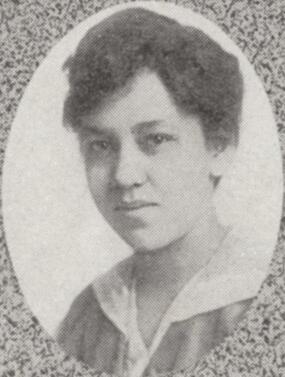 Photograph of Mabel Raimey from the 1919 Badger yearbook. University of Wisconsin–Madison Libraries and Archives, local indicator no. 2017s00539. Photograph of Mabel Raimey from the 1919 Badger yearbook. University of Wisconsin–Madison Libraries and Archives, local indicator no. 2017s00539. No doubt Mabel Watson Raimey could identify with the Negro College Fund’s famous slogan declaring that “A mind is a terrible thing to waste.” The iconic slogan first appeared in 1972. In the early decades of her life, Raimey was repeatedly told that women and Black people could not do the kinds of things she wanted to do. She finally became a lawyer, establishing her own legal practice proudly serving both Black and white clients in probate and business matters. She grew up in Milwaukee, the daughter of Nellie Cora Watson Raimey and Anthony Van Leer Raimey, with roots to one of the first African American families in the city. Her great-grandparents, Sully and Susanna Watson, freed slaves who fled pre-Civil War Virginia, settled in Milwaukee and bought property by 1851. Mabel was born in 1895 and graduated from West Division High School at age 14. When she told the family physician that she wanted to be a doctor, that early diploma apparently meant little. As Raimey later recalled, he told her that “medicine would be too hard” and “women couldn’t handle the studies.” Young Mabel instead began preparing for the more traditional profession of teacher, first attending the Milwaukee Normal School, a forerunner of the University of Wisconsin-Milwaukee, before transferring to the University of Wisconsin in Madison. She graduated in 1918—believed to be the first African American woman to graduate from the university—and soon accepted a teaching position with the Milwaukee schools. The job lasted three days. Raimey, who was very light-skinned, was called into the principal’s office and asked if she was a Negro. She was summarily dismissed by an administrator who seemed more amused than apologetic about the hiring “mistake.” If that was not enough of an insult, Raimey heard a secretary giggle and turned to find the principal making a face behind her back, something she would never forget. She found new employment as a legal secretary for a downtown lawyer. In 1922, Raimey enrolled in night classes at Marquette University Law School, but continued to work her day job. While historians now believe that she was the first Black woman to complete law school in Wisconsin, she later acknowledged keeping her silence on the subject of race. “Nobody asked me,” she said. “I never told.” “Thus, we have the potential law student, Mabel Raimey—discouraged from medicine because of sexism—prevented from teaching because of racism,” wrote Phoebe Weaver Williams, Marquette University emerita law professor, in a piece about Raimey. “Upon entering law school, she had already experienced the double jeopardy faced by women of color.” For Raimey, gender may have proved a more obvious and formidable barrier than race. She continued working as a legal secretary before beginning to practice law in that office. She was admitted to the Wisconsin Bar in 1927 and, over time, developed her own practice. (A quick historical note: It would be decades before the second black woman was admitted to the Wisconsin Bar. That was Vel Phillips, who graduated from the University of Wisconsin Law School in 1951.) Nothing about that career path was easy to navigate in Raimey’s time. “When she entered law school, there were few white women practicing law in the state,” according to a State Bar of Wisconsin legal history, “Pioneers in the Law: The First 150 Women.” “There were fewer, if any, African American male lawyers, and there were no African American female lawyers,” it continued. “In 1911 the American Bar Association had barred Blacks from membership, a barrier it would not remove until 1943.” Wrote Williams: “During interviews and speeches she repeatedly admonished younger women to set high goals, and ‘never [use] sex or race as an excuse not to attain these goals.’” Raimey also served as a leader in the community, including as a founding member and longtime board member of the Milwaukee Urban League. She served on the YWCA board and was a founder of the Milwaukee Northside YWCA. She became a charter member of the Epsilon Kappa Omega Chapter of the Alpha Kappa Alpha Sorority. In more recent decades, Raimey’s role in Wisconsin legal history has been recognized in public and permanent ways. A historic marker stands on the Marquette University campus. “Professionally, it was always my intention to serve all people, regardless of race, color, creed, or economic ability, in a fair and just manner,” Raimey said, as she accepted an award from the Black Law Students Association at Marquette. “If my acceptance and completion of law school at Marquette University in the 1920s has inspired or encouraged anyone to enter the field of law, I am pleased. If any accomplishment that I may have made has had any influence on any young people, I am pleased more.” She continued working until suffering a stroke in 1972. It happened while she was bathing, alone in her apartment. Friends found her after five long days that she survived by drinking water from the tub. She died in 1986. In September 2022, members of the sorority chapter gathered for a special ceremony at Raimey’s grave at Forest Home Cemetery. She was the last surviving member of her family, and the burial site had never been graced with a headstone. Her sorority sisters, dressed in white, dedicated a two-sided monument complete with her portrait and accomplishments. “As Alpha Kappa Alpha women, our chapter considers today a true honor to pause and place an exclamation point on Raimey’s service, community impact, and trailblazing legacy,” declared Debra Brown-Wallace, chapter president. “Now with a proper headstone, Raimey can be an inspiration of future generations to come.” This project is supported by grants from
Wisconsin legal historian Joseph Ranney joined WJI at its virtual June Salon for a fascinating talk on post-Civil War civil rights laws across the nation and in particular here in Wisconsin. Ranney is an adjunct professor at Marquette Law School and the author of several books and articles on Wisconsin and American legal history, including Trusting Nothing to Providence: A History of Wisconsin's Legal System and Wisconsin and the Shaping of American Law. He is working on a history of civil rights law in the Northern and Western states from colonial times to 1968. Ranney's talk relates to WJI's Unsung Heroes blog series on women and people of color whose impacts on Wisconsin legal history deserve more attention. Ranney discusses, among others, two men profiled in the series: Ezekiel Gillespie, who fought for the right to vote for Wisconsin's Black men, and William T. Green, who as an attorney worked to enforce civil rights. Unsung hero: Belle Case La Follette fought for suffrage, civil rights and progressive reforms4/20/2023 By Amy Rabideau Silvers 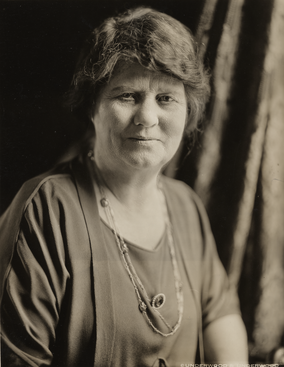 Belle Case La Follette circa 1924. Wisconsin Historical Society, Image 55358. Belle Case La Follette circa 1924. Wisconsin Historical Society, Image 55358. While Robert “Fighting Bob” La Follette may now be the more familiar name to Wisconsin ears, his wife should be regarded as an equally remarkable person in Wisconsin law and progressive politics. Her name was Belle Case La Follette. In 1885, she became the first woman to graduate from the University of Wisconsin Law School, starting law school after she was already a wife and mother. She earlier helped husband Bob with his studies and then with legal briefs, including one brief in the 1890s “that broke new legal ground and won his case before the state’s supreme court,” according to an article by historian Nancy Unger in the Wisconsin Historical Society’s Wisconsin Magazine of History. “Justice William P. Lyon complimented Bob on the brief,” Unger explained, speaking in an interview with the Wisconsin Justice Initiative. Bob La Follette proudly and matter-of-factly told the court that his wife had written it. Belle La Follette never formally practiced law, but she practiced plenty of activism. She wrote, lectured and agitated for progressive causes, including women’s suffrage, child labor reform and racial justice. In 1909, her husband began La Follette’s Weekly, later La Follette’s Magazine and now The Progressive. Belle La Follette served as its first editor and as columnist, expanding the boundaries of what was considered appropriate for women readers. Her writing was nationally syndicated as brief “Thought for the Day” articles in newspapers in 20 states. “She was a tremendous voice for women’s suffrage,” Unger says. “She was instrumental in women getting the vote and changing minds.” In 1912, that included testifying before the U.S. Senate Committee on Women’s Suffrage, where she declared that suffrage was “a simple matter of common sense.” “You know how Lincoln defined government at Gettysburg. ‘Ours is a government of the people, by the people, and for the people,’” she said. “And are not women people?” That same year, she went on one of her barnstorming tours for suffrage, giving 31 speeches in 12 days across 14 Wisconsin counties. In 1914, she spoke for 63 consecutive days in states including Pennsylvania, Ohio, Indiana and Michigan. Belle La Follette and friends listened from the Senate gallery as the Nineteenth Amendment was approved on June 4, 1919. Her next action was likely one of the reasons that Wisconsin became the first state to officially ratify on June 10, 1919. She sent telegrams to representatives back home with the news. Once ratified, then-Sen. Bob La Follette announced Wisconsin’s vote and had it read into the Congressional Record. (For the record, Illinois technically passed a resolution first, but that was found to be invalid.) “And it was no mere state pride that caused me to thrill with joy when Mr. La Follette made the announcement in the Senate,” she later wrote in La Follette’s Magazine. “It was the conviction that a great service had been rendered. With Wisconsin as an example—an object lesson—ratifying so speedily, almost unanimously, the opposition was beaten at the very beginning of the race—left dashed and hopeless at the very start!” The Nineteenth Amendment became law in 1920. “And now the 17 million women of the United States are fully enfranchised,” Belle La Follette wrote in celebration. “… For the first time in American history, women may vote in every state in the Union for candidates for all offices ... and women may hold any office now held by men, whether appointive or elective.” The new constitutional amendment meant that the University of Wisconsin’s first female law graduate could finally vote. She was 61. A progressive family tree Belle Case was born in 1859 in Summit, Wisconsin, the daughter of Anson and Mary Nesbit Case, and grew up in Baraboo. Her mother was moved by a lecture on women’s suffrage and spoke to her children about such matters. Her parents valued education, including for their only daughter. An eager and brilliant student, Belle was accepted at the University of Wisconsin, which was where she caught the eye and heart of a student named Bob. After graduation, she taught for two years before agreeing to marry in 1881. At Belle Case’s request, the Unitarian minister omitted the word obey from their marriage vows. They were true partners in life and progressive politics. During his long career, her husband served as Dane County district attorney, congressman, private attorney, three-time governor of Wisconsin, and U.S. senator, as well as founder of La Follette’s Weekly and as a Progressive Party presidential candidate. Belle La Follette is credited with some measure of his success, sharing her progressive arguments, legal skills and political savvy through the years. She was, Bob La Follette declared in his autobiography, his “wisest and best counsellor.” He also spoke of “when we were governor.” “And though she did not enjoy all of the trappings that came with being a politician’s wife (she particularly hated Washington small talk), she saw great value in women becoming politically aware,” according to Unger, a professor at Santa Clara University, who has written extensively about the La Follettes, including two books that received Book of Merit Awards by the Wisconsin Historical Society. “She urged all women to recognize that the problems they thought of as personal were in fact political and therefore required women’s political activism.” After her husband’s death in 1925, La Follette was asked to finish his term in the U.S. Senate, which would have made her the first woman to actually serve as senator. (Rebecca Latimer Felton, 87, of Georgia, was sworn in as a member of the Senate in 1922. She served just one day. No woman would be elected until 1932.) La Follette declined and son Robert La Follette Jr. ran instead. For the ever-practical and political Belle, it made sense to have someone younger take up the family’s progressive banner. Robert Jr. served more than 20 years in the Senate; another son, Phil, was elected Wisconsin governor three times. She also encouraged her daughter-in-law, Isabel “Isen” Bacon La Follette, to give her opinion of a draft platform by husband Phil as he began running for governor, according to an article by historian Bernard A. Weisberger in the Wisconsin Magazine of History. Belle La Follette did not buy Isen’s argument that she knew nothing of politics. “You are an intelligent woman,” Belle La Follette told Isen. “If what Phil writes doesn’t appeal to you, rest assured it will not appeal to others.” True to her convictions La Follette continued her writing and speaking, advocating on a wide variety of issues for the rest of her life. For reasons of health and comfort, she gave up corsets and stays and told other women they should, too. She believed in exercise for all, including women. Women should not, La Follette contended, have to change their names when they marry. She decried racial injustice, speaking before and in support of Black communities and making headlines for it. “She Defends Negroes—Wife of Senator La Follette Denounces Segregation—Says U.S. Government Errs,” read a 1914 front-page story in The Washington Post. “It seems strange,” she once wrote, “that the very ones who consider it a hardship to sit next [to] a colored person in a streetcar, entrust their children to colored nurses, and eat food prepared by colored hands.” Civil rights activist Nannie Helen Burroughs introduced her as “the successor of Harriet Beecher Stowe.” La Follette also supported rights and respect for American Indians. La Follette especially deplored violence in all forms, from corporal punishment for children to capital punishment for crime. She was a founder of the Women’s Peace Party, which later became the Women’s International League for Peace and Freedom. Former President Theodore Roosevelt was outraged by its public stance, writing a scathing assessment of the WPP and calling it cowardly and foolish. Unger tells what happens next. “Belle La Follette fired back in La Follette’s Magazine that Roosevelt assumed ‘that War is the only means of settling international differences and moreover that War is bound to settle them right. … History demonstrates that [even] imperfect and temporary plans of mediation, conciliation, and arbitration have been more effective than war in securing justice ….’” “Was Christ cowardly? How long did the agitation against human slavery last before it was abolished?” La Follette wrote. A legacy hailed and then long forgotten Belle La Follette died in 1931. She was 72. She rated obituaries in newspapers across the country, including The New York Times, which called her perhaps “the most influential of all American women who have had to do with public affairs in this country.” Mostly, though, her life was told through the lens of “the little woman behind the great man,” according to Unger. “Only a few go so far as to recognize her as an important reformer in her own right.” In 1993, the State Bar of Wisconsin’s charitable arm, the Wisconsin Law Foundation, began its Belle Case La Follette Awards in recognition of her accomplishments. The annual awards now honor three bar members working in Wisconsin and representing underserved populations, one each from the UW Law School, Marquette University Law School and an out-of-state law school, said Joe Forward, communications director for the State Bar. La Follette was, at heart, a bit of a homebody and somewhat shy, but she believed in standing up and speaking out, something she thought all citizens should do. Perhaps more than her politician husband could, she claimed a measure of greater freedom in pushing progressive ideas, says Unger. “She’s a bit like Eleanor Roosevelt,” Unger says. “She wielded tremendous influence as a journalist and public speaker, and the nation improved because she did. She didn’t pull any punches in her sweet ladylike way.” This project is supported by grants from
By Amy Rabideau Silvers  Ada Deer. Photo courtesy of the Wisconsin Historical Society, Image 115579. Ada Deer. Photo courtesy of the Wisconsin Historical Society, Image 115579. I am a Menominee Indian. That is who I was born and how I have lived. I am tall like the trees that blanket my reservation in northern Wisconsin, and my skin is brown like their bark. Although I have not lived there in years, my roots grow deep in that rocky soil. That soil has anchored me during tumultuous times. I have roots elsewhere—geographically, ancestrally, and intellectually—and they too produced and nurtured the person I have become. But my taproot is Menominee. Ada Deer began her memoir — Making a Difference/My Fight for Native Rights — with those words. Now 87 and living in the Madison area, she is most proud of helping to restore tribal status and rights for her people, and helping other tribes. As a girl and young woman, Deer saw her mother, Constance “Connie” Wood Deer, fight congressional efforts to terminate the Menominee tribe and end its historic relationship with the federal government. The Menominee, poor but with rich timber resources, were considered a prime candidate for the new policy called termination. “Termination sought to end federal supervision, dissolve reservations, and assimilate individual Indians into the American mainstream,” Ada Deer wrote. “Termination involved abolishing tribal governments, allotting tribal land to individuals, removing the protections of trust status, closing the tribal rolls, and divesting of tribal resources.” Despite a flawed vote and later challenges, the Menominee Termination Act was passed by Congress and signed by President Dwight Eisenhower in 1954. Termination was set for 1958, with the date later delayed until 1961, when it became a reality. Deer remembers the shock of realizing that, legally, she and her people were no longer members of a federally recognized tribe. “One day we were Indian, and one day we were not,” Deer said, speaking in an interview with the Wisconsin Justice Initiative. “People did not understand what termination was. It was a cultural, economic and political disaster.” “We thought of ourselves as an Indian tribe and as Menominee people, but Congress had taken away our status as Indians without informed consent,” she wrote in her memoir. “Termination left Menominees wondering who they were. It was a period of confusion, despair, and frustration.” In anticipation of termination, the state created Menominee County from the former Menominee Reservation land. After termination, complicated legal arrangements meant families that had long lived on reservation land — land held in common by the tribe — had to buy their homes and pay taxes. Many lost their homes. Many jobs at the tribe’s lumber mill were cut, with new supervision geared toward profit-making, not sustaining the forest and its people. That forced families to leave what had been Menominee land. Against the wishes of many tribal members, a legal trust began working with a development company, building homes and selling land to nontribal members. In some ways, legal termination and its ramifications were not unlike other troubling chapters of Menominee history. In the 19th century, the federal government tried to force the tribe to move farther west. Chief Oshkosh refused, finally signing a treaty in 1854 that guaranteed the tribe’s right to Wisconsin reservation land. Decades later, Menominee leaders rejected the idea of allotment, which called for individual plots of land, instead insisting on the right to hold their land in common. Other policies born of prejudice brought their own social consequences and suffering. Joe Deer, Ada’s father, was a student at a Catholic boarding school, where children were punished for speaking their native language or using their Indian names. Ada Deer grew up mostly on the reservation, the oldest of five children born to Joe and Connie Deer. The family lived in a log cabin on the bank of the beautiful Wolf River. They did not have indoor plumbing, electricity or a telephone. Joe worked at the tribal lumber mill, also hunting and fishing for his family. Her mother, a white woman, was a nurse who came from a well-to-do Philadelphia family with Quaker roots. While never a member of the Menominee tribe, she was an outspoken rabble-rouser who lived most of her life on the reservation. She took her young children to the meetings where the daily life of the tribe and later its fate were debated. “She was a leader and she was a fighter,” said Deer. “You were put on this earth for a purpose,” Deer’s mother would tell her. “You are here to help people. You are here to help your people.” Finding her purpose To do that, Deer decided she needed all the education she could get. In 1957, she earned a bachelor’s degree in social work, the first Menominee to graduate from the University of Wisconsin-Madison. She next went to Columbia University, becoming the first American Indian to earn a master’s in social work. Deer loved social work but later felt drawn to make a difference on a more macro policy scale, especially for her people and other Indian tribes. She began law school at UW-Madison but soon decided that the problem of termination was more important. She listened and learned at gatherings of Menominee people. “It struck my heart that we could lose our land, and it all came together what it meant,” she told WJI. “People were suffering. People were dying. There was no medical care.” In interviews and her memoir, Deer said that around 1970 she reached out to Joseph Preloznik, director of Wisconsin Judicare, previously involved in tribal legal issues. In meetings with Preloznik, she realized that if the situation was created by an act of Congress, a law was needed to “uncreate” the problem. “We have to change this,” she declared. “What can we do?” “You have to get a law through Congress,” replied Preloznik. For Deer, her people’s difficulties suddenly had a path to a different kind of future. Preloznik also joined meetings with Menominee people. Listening sessions included tribal people living in Milwaukee and Chicago, and they led to the creation of a grassroots group called DRUMS, short for Determination of Rights and Unity for Menominee Shareholders, the name proposed by Deer’s sister. Deer suggested the word restoration for the new concept of reversing termination. DRUMS received assistance from the Native American Rights Fund, which assigned attorneys Charles Wilkinson and Yvonne Knight to the case. And when the tribe needed someone to live and lobby in Washington, Deer agreed to represent her people. Supporters came to include Sens. Gaylord Nelson and William Proxmire from Wisconsin, and Sen. Ted Kennedy. As a lobbyist, Deer took advantage of any opportunity to talk restoration legislation. Once while on an airplane flight, she spotted John Conyers Jr., a Michigan congressman and a founder of the Congressional Black Caucus. She strode up to his first-class seat, introducing herself and the subject of tribal restoration. “I’m working on the repeal of termination,” Deer told him. “This is the Menominee Restoration Act, and it is as important to Menominees and to Indians nationwide as Brown v. Board of Education was to you.” “Come to my office,” he replied. The Black Caucus joined the bill, which gained near unanimous support in both houses. A legal victory — and historic first Almost 20 years after Congress voted for termination, the Menominee tribe was officially reborn. The Menominee Restoration Act was signed into law by President Richard Nixon on December 22, 1973. “The Menominee Restoration Act was the first time that a tribe’s legal status was restored after being terminated,” said NARF attorney Wilkinson, speaking to the Wisconsin Justice Initiative. While many were involved, Deer is considered the driving force behind the success. “Ada was the leader,” Wilkinson wrote in the foreword to Deer’s memoir. “The adoption of the Menominee Restoration Act announced the end of termination and the beginning of the tribal self-determination era. Without question, the single most important person in this transition was Ada Deer.” Deer was elected the first woman to chair the tribe, serving from 1974 to 1976, helping her people chart a new course and reestablish relations with federal, state and neighboring governments. Deer served in other roles during her working life, including as a lecturer with the American Indian Studies program and the School of Social Work at UW-Madison, returning to serve as American Indian Studies director. Called to service in Washington In 1993, appointed by President Bill Clinton, she became the first American Indian woman to direct the Bureau of Indian Affairs. On her watch, the federal government established government-to-government relationships with 226 Alaska Native villages and tribes, expanded self-governance to many other tribes, and approved the recognition of four tribes. She recalled in her memoir how, during a Senate Appropriations Committee hearing, Sen. Slade Gorton, a Republican from Washington state, asked her how long these welfare payments to Indians were going to continue. “Excuse me, Senator,” Deer replied. “These are not welfare payments. As you know, this country was built on Indian land with Indian resources, and treaties lay out the nation’s obligations to Indians, and treaties are the supreme law of the land. These are permanent obligations and will continue.” “I could hear the air being sucked out of the room,” she wrote. Connie Deer’s daughter was not going to let the welfare myth go unchallenged. In the case of the Menominee, tribal homeland once encompassed 10 million acres. Twentieth century descendants had fought to restore the tribe’s claim to some 235,000 mostly forested acres. “Few individuals have had as profound an impact on U.S. Indian policy as Ada has had,” wrote Theda Perdue, the historian and friend who, says Deer, co-authored the memoir. Running like a Deer Deer also ran for public office, twice for Wisconsin secretary of state, as well as for Congress against then-State Rep. David Clarenbach (the subject of another WJI Unsung Hero feature and someone she described as “a good guy”) in the 1992 Democratic primary. She beat Clarenbach but lost in the general election. Her campaign slogan was “Nothing Runs Like a Deer.” When the John Deere company threatened to sue, the campaign said go ahead. Company officials apparently reconsidered how it would all look because no lawsuit materialized. More recently, she served as a consultant on the American Indian exhibit at Chicago’s Field Museum. While no longer as active, Deer remains interested in social issues, including mass incarceration, adequate substance abuse treatment, and protecting the environment. Education and involvement, she said, remain the true paths to social justice and change. “There are many opportunities to serve,” said Deer. “I want everyone to get a decent education and get involved, depending on their interests. And vote. I think every citizen should vote, and it should be an informed vote. We should appreciate our country and all that it offers.” This project is supported by grants from
Unsung hero: David Clarenbach worked to secure equal rights for gay and lesbian individuals10/20/2022
By Amy Rabideau Silvers Forty years ago, with the addition of just a few words to its nondiscrimination statute, Wisconsin became the first state in the nation to declare that gay and lesbian citizens were entitled to equal rights in housing, employment and public accommodations. It was, the law stated, “the right of all persons to have equal opportunities … regardless of their … sexual orientation.” The bill was signed by Republican Gov. Lee Dreyfus on Feb. 25, 1982. Wisconsin became known as “The Gay Rights State.”  David Clarenbach David Clarenbach The successful legislation was largely credited to State Rep. David Clarenbach, a Democrat who still lives in Madison. The victory came with the radical strategy of not arguing about homosexuality but instead arguing for equal rights, he said, speaking in an interview with the Wisconsin Justice Initiative. Bipartisan support was crucial. Crucial to that support was winning the blessings of Wisconsin religious communities, including from Protestant, Jewish and Catholic leaders. “The Wisconsin Baptist convention voted to support AB 70,” Clarenbach said. “That was the beginning of the religious right movement, the so-called moral majority, and we were able to isolate the moral majority as the fringe movement that they are.” The effort included identifying what legislative members – both Democrat and Republican – needed political cover to vote for the antidiscrimination bill. “We would go to that person’s local Democrat and Republican clubs. We would go to that person’s minister or priest and talk about what was the moral thing to do,” Clarenbach said. “We didn’t ask them whether being gay was good or bad, to be encouraged or discouraged, whether it was sinful or not sinful. We asked whether bigotry and discrimination could be tolerated against any group in our society. And when that is the question, the answer is a resounding no.” Gay and lesbian activists supported the effort, though within the community there was debate about what should be the first goal – a bill to decriminalize sexual conduct or a bill banning discrimination in areas like housing and employment. Playing the long game New to the State Assembly, Clarenbach joined forces with Rep. Lloyd Barbee (D-Milwaukee), who had long proposed similar bills. Clarenbach, too, began playing the long game, formally introducing bills every year for eight years. Along the way, the language morphed from “sexual preference” to “sexual orientation” in the nondiscrimination bill. The other bill, renamed the Consenting Adults Bill, became the canary in the coal mine, gradually winning greater support, while the antidiscrimination “gay rights” bill stayed in committee. “We weren’t going to bring it out of committee until we had the votes,” he said. “By the ’81-’82 session, we knew we were really close. In 1981, the Consenting Adults Bill lost in the Assembly by one vote, defeated 50-49.” It was time to bring the antidiscrimination bill out for a vote. Not all Democrats voted for it, but the long campaign had won over enough Republicans to win approval. “The bill would not have passed in either house without the support of Republican legislators,” Clarenbach said. Gov. Dreyfus did not have to sign it but chose to do so. “It is a fundamental tenet of the Republican Party that the government ought not intrude into the private lives of individuals,” Dreyfus said. “And there is certainly nothing more private nor sensitive than who you love or how you love.” Winning consensus for consent Then it was back to the matter of the Consenting Adults Bill. The measure was next offered as a budget amendment and approved by the Democratic Assembly caucus. That should have cleared a path for approval. Instead, a few Democrats said they couldn’t vote for the budget bill because of it. Clarenbach made the difficult decision to withdraw the amendment. It was later reintroduced as a standalone bill in the next session of the Legislature, and despite pressure from the conservative right it won bipartisan approval. “In retrospect, I am certain that withdrawing the earlier amendment was one of the things that contributed to getting the Consenting Adults Bill passed,” Clarenbach said. “Suddenly I was seen in a different light and that next session I got elected speaker pro tem.” Democratic Gov. Tony Earl signed the Consenting Adults Bill into law on May 5, 1983. Once again, the right words helped make the case for the change. The issue was cast as one of “sexual privacy” – including for married heterosexual couples – rather than the repeal of what was known as the anti-sodomy law. It all made for some interesting debate. Clarenbach remembers quipping that “95% of the adults in Wisconsin have violated the law and the other 5% have no imagination.” Lest anyone think Wisconsin was going too wild, the final version of the bill included a disclaimer that “Wisconsin does not approve of sexual conduct outside of the institution of marriage.” The Consenting Adults Law ended an unusual legal situation created by the passage of the nondiscrimination bill, as the late Dick Wagner, a longtime gay advocate, activist and historian, once explained in an Our Lives article. Consider, Wagner declared, the “strange anomaly that for a year homosexual acts were technically illegal but you could not discriminate against people for them.” Clarenbach later won other legislative victories, including on bills banning discrimination in health care and insurance for patients with HIV/AIDS, signed into law by Republican Gov. Tommy Thompson.  Kathryn Clarenbach. Photo courtesy of David Clarenbach. Kathryn Clarenbach. Photo courtesy of David Clarenbach. Growing up political Clarenbach was born in St. Louis, Missouri, to politically progressive and involved parents. His mother, Kathryn Clarenbach, was a founder and the first chairwoman of the National Organization of Women (NOW). His father, Henry Clarenbach, who worked in real estate, served as a delegate to the Democratic Convention in 1968 and was active in the anti-war movement during the Vietnam War. Clarenbach has proudly and matter-of-factly talked about being raised in a feminist household. “My own involvement in civil rights and against the war in Vietnam was really part and parcel of what she was doing as a feminist leader on the front lines of that struggle,” he said in an interview for the Veteran Feminists of America Pioneer Histories Project. “So, we really were taught and believe that it’s all part of the same movement. It’s the humanist approach to society – that all of us are equal and should be treated as individuals who have equal opportunities. And we were shown that and that’s how we lived.” His parents moved their family back to Wisconsin in 1960. Clarenbach attended public schools and then the University of Wisconsin-Madison. It would be years before Clarenbach officially stepped out of the closet, publicly acknowledging his own sexuality. More than anything, the political dynamics were an early version of don’t ask-don’t tell. “I knew I was gay from my high school days and also knew that I wanted to be involved in public service,” Clarenbach said. “I was first elected at a time when openly gay and lesbian officials didn’t exist, less than three years after Stonewall took place,” he said, referring to the 1969 harassment and events that sparked the gay rights movement. “To predict that Wisconsin would pass the country’s first gay rights law would have been absurd.” At 17, he decided to run for the Dane Country Board of Supervisors. In 1972, he became the first 18-year-old elected to public office in Wisconsin, just months after the 18-year-old vote began that January. Other races followed. In 1974, Clarenbach was elected to the Madison Common Council, and then to the Wisconsin State Assembly at the age of 21. He served as speaker pro tem from 1983 until 1993. Indeed, his only unsuccessful campaign came in 1993 when he ran for Congress, hoping to represent Wisconsin’s 2nd District. Clarenbach went on to head The Gay and Lesbian Victory Fund, based in Washington, D.C. The group, now the LGBTQ Victory Fund, works to elect openly gay and lesbian candidates to public office. Politics and perspectives today These days, he’s a self-described “recovering politician,” still passionately interested in the politics of social and economic change. With the recent Supreme Court decision overturning Roe v. Wade, he said, there’s a “clear and present danger to a whole range of privacy-related precedents, including gay marriage and contraception.” “It’s a slippery slope,” Clarenbach said. “This is the McCarthy era all over again, and there are clear parallels to 1933 Germany …. There is a lot of work to do. Fundamental issues of civil rights and equality are at risk. “The challenge we have today is that the struggles are not over. Still today, the statutes don’t mention the transgender community. Still today, more than half the states don’t have LGBTQ protections. It’s hard for me to think that some Idaho legislator thinks it’s OK to fire someone, not for job performance, but for who they love. Or for someone to say, you can’t rent a house because you’re a lesbian, and that’s what the majority of states are still saying.” Wisconsin’s gay rights law continues to make a difference. The state Department of Workforce Development, for example, receives some 100 complaints a year regarding possible discrimination cases. “It’s a law that affects the real lives of real people. It’s not theoretical,” he said. “I’ve had people come up to me and say, ‘I moved to Wisconsin because of the law’ and ‘I came to the University of Wisconsin because I felt I could be safe here.’ Laws don’t change attitudes but they are a means to an end.” Is that what he is most proud of? Clarenbach laughed, saying he expects “the civil rights bill will be the lead to my obit.” “But I’m most proud of living a life that my parents would be proud of,” he said. He remembers his last day in the Legislature, presiding one final time as speaker pro tem. “I said my goodbyes and I received a standing ovation from both sides,” Clarenbach said, speaking with emotion. “I’ve tried to be an honest and decent person who treats others with civility, including those with whom I disagree.” This project is supported by grants from
Joshua Glover escaped from slavery and started a power struggle between two supreme courts12/9/2021
By Margo Kirchner Second of two parts Beginning shortly after his escape from a Milwaukee jail in 1854, Joshua Glover was the catalyst for Wisconsin judicial and legislative declarations that the Fugitive Slave Act of 1850 was unconstitutional and void. “The real emphasis of Glover’s escape comes in the court actions after,” said Clayborn Benson, executive director of the Wisconsin Black Historical Society. Those decisions took the “Glover incident” to a national level, reported in newspapers across the country, he said. As described by author H. Robert Baker in The Rescue of Joshua Glover: A Fugitive Slave, the Constitution, and the Coming of the Civil War, “[t]he rescue of Joshua Glover became a six-year struggle not only to determine whether the Fugitive Slave Act was unconstitutional but to determine the substance and meaning of the Constitution itself.” Within days of the Glover jail break, Sherman Booth, the publisher of the Free Democrat abolitionist newspaper who helped whip up the crowd that freed Glover, was arrested and charged with aiding the escape of a fugitive slave in violation of the act. Booth appeared before the federal commissioner on March 21 and was released on bail until formal indictment and the next district court trial date in July. He kept reporting in his newspaper about his own case. In late May, the federal court commissioner sent Booth back to jail in the custody of U.S. Marshal Stephen Ableman. Booth applied to Wisconsin Supreme Court Justice Abram Smith for a writ of habeas corpus, arguing that his imprisonment by Ableman was illegal because the Fugitive Slave Act of 1850 was unconstitutional and his warrant was defective. Smith granted the writ, ruling that the act was unconstitutional. Ableman complied with Smith’s order for Booth’s release but appealed the decision to the full Supreme Court, then consisting of three justices: Smith, Chief Justice Edward Whiton, and Justice Samuel Crawford. On July 19, 1854, in a two-to-one decision, the Wisconsin Supreme Court affirmed Smith’s decision to discharge Booth from custody. Whiton and Smith found that the state court had the power to protect the state’s citizens from illegal restraint, the warrant for Booth’s arrest failed to charge a crime, and the Fugitive Slave Act of 1850 was unconstitutional.
Whiton wrote the Act illegally conferred power on appointed commissioners, rather than judges. Second, he said, it denied the alleged fugitive the right to have his or her case tried to a jury in violation of the right to due process. Whiton focused on the danger to a free citizen of being taken into slavery when the evidence determining whether the person was a slave was presented in the state of the slave owner, with no opportunity for cross-examination of witnesses or submission of contrary evidence. The certificate of that court was then taken as conclusive in the state where the person was captured, causing the commissioner to order the person’s return. “We are at a loss to perceive how this proceeding, by virtue of which a freeman becomes a slave, can be justly called ‘due process of law,’” Whiton wrote. Smith concurred in a lengthy opinion based on the Constitution’s reservation of rights to the states. States, he wrote, retained the right to determine their own process for a slave owner’s claim. “In Virginia he may be, indeed, a chattel; but in Wisconsin he is a MAN. . . the laws of Wisconsin regard him as a person here,” Smith wrote. Moreover, he said, there was no basis for federal law enforcement or court officials’ involvement in the return of slaves. He continued: Had the Northern States imagined, that by assenting to this clause of the Constitution, they were thereby conferring upon the federal government the power to enter their territory in pursuit of a runaway negro, . . . to subject their houses to search, and to override their own laws and municipal regulations, and that they were parting with all power to regulate the mode of procedure by which that clause was to be carried into effect; does any sane man believe that they would ever have assented to it? Crawford dissented, writing that the Wisconsin courts should decline to interfere with federal custody and that Congress had the constitutional power to pass the act. The dissent is thought to have caused his loss to Orsamus Cole in the 1855 election. Ableman, the marshal, sought review in the U.S. Supreme Court. The state Supreme Court clerk forwarded the record to the U.S. Supreme Court when ordered. This is the second of two posts about Joshua Glover. Read the first one here. Meanwhile, in July 1854, Booth, and two other men who assisted Glover were indicted on criminal charges of aiding a fugitive slave in violation of the 1850 act. One, John Messenger, who had spirited the just-escaped Glover to a abolitionist's home in Waukesha, died shortly after his arrest and release on bail. The other, attorney John Rycraft, who had created a "vigilance committee" to ensure Glover's rights were protected, was tried and convicted in November 1854 and sentenced to ten days in jail and a fine of $200. Booth’s criminal trial took place in early January 1855. The jury found him guilty, and Miller sentenced him to one month of imprisonment and a fine of $1,000, with Booth to remain in custody until the fine was paid. A few days later Booth and Rycraft applied to the Wisconsin Supreme Court for writs of habeas corpus, arguing that the federal court trial proceedings were void. The Wisconsin Supreme Court held, this time 3-0, that Booth’s and Rycraft’s convictions were illegal and ordered them discharged from imprisonment. All three justices agreed that the indictments in the cases failed to charge and the evidence at the federal trial failed to prove any offense within the jurisdiction of the federal court. |
Donate
Help WJI advocate for justice in Wisconsin
|
Copyright © 2024 Wisconsin Justice Initiative Inc.
The Wisconsin Justice Initiative Inc. does not endorse candidates for political office. The Wisconsin Justice Initiative Inc. is a 501(c)3 organization.
The Wisconsin Justice Initiative Inc. does not endorse candidates for political office. The Wisconsin Justice Initiative Inc. is a 501(c)3 organization.














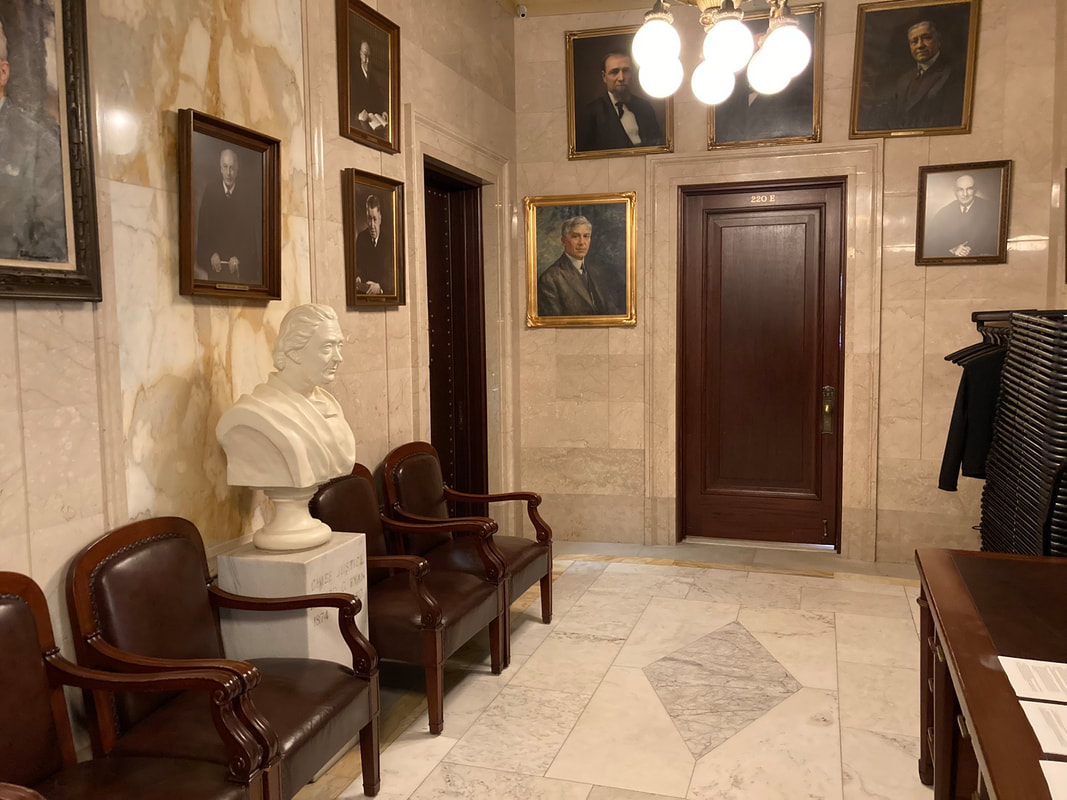







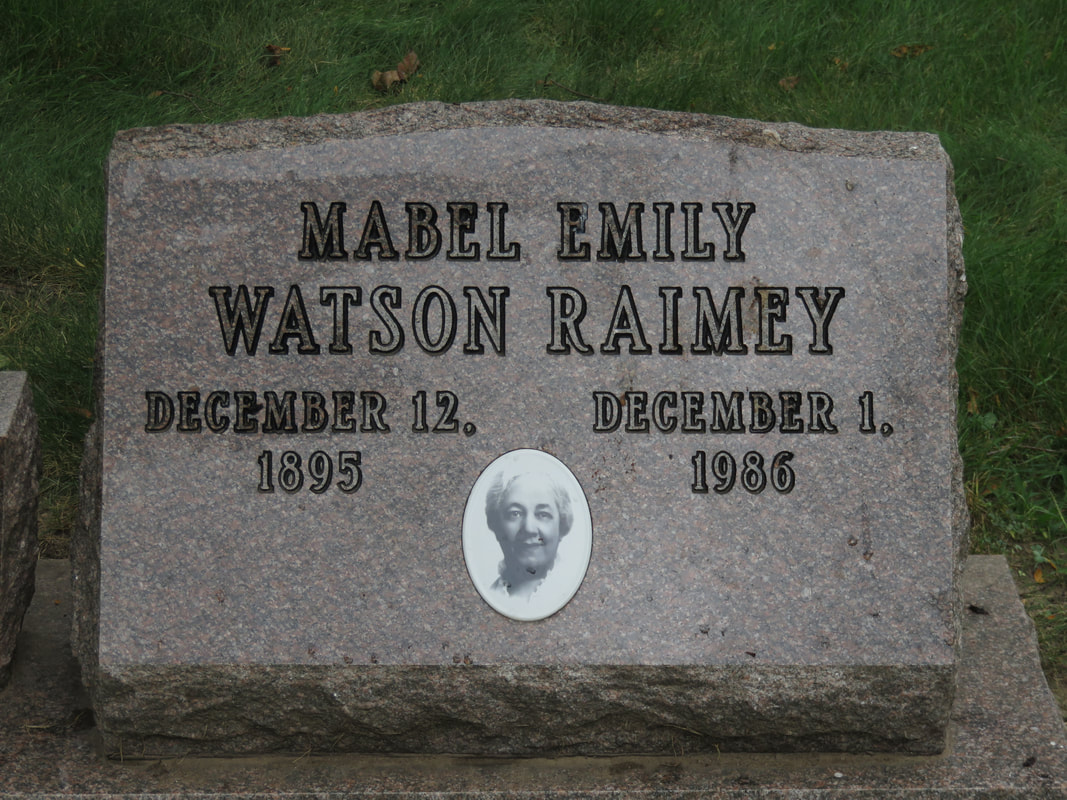

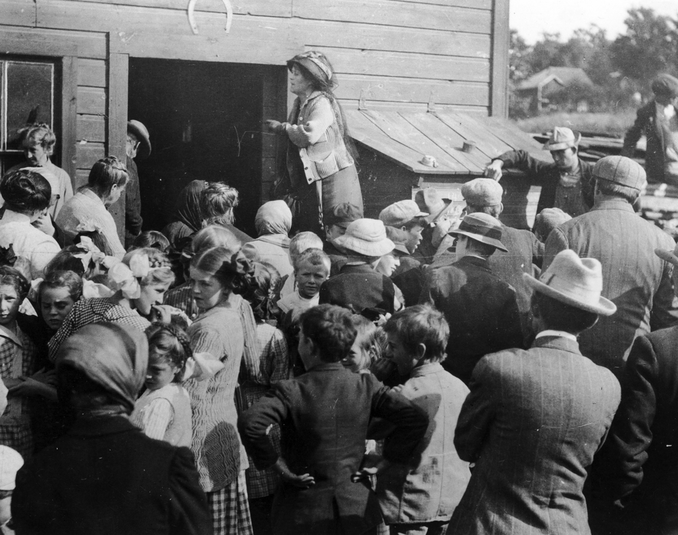





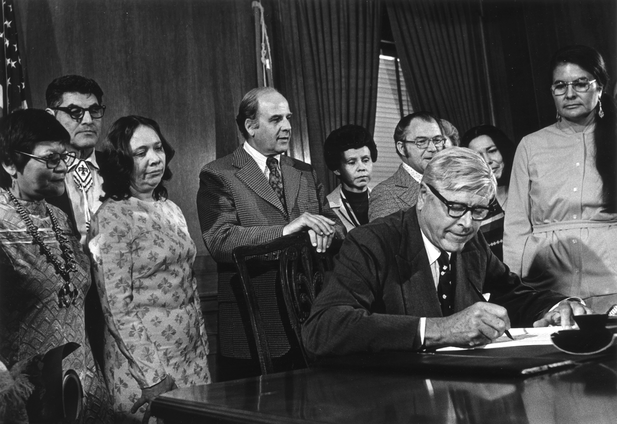
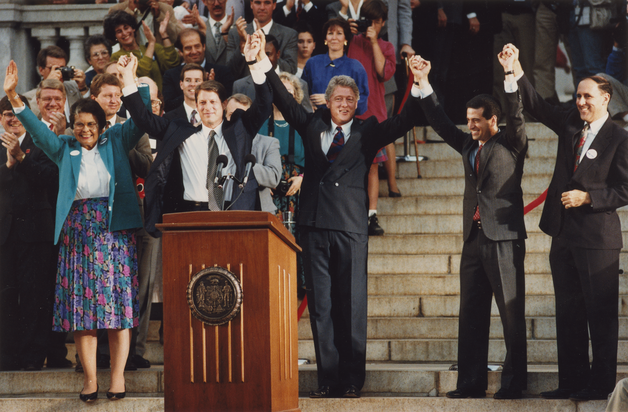
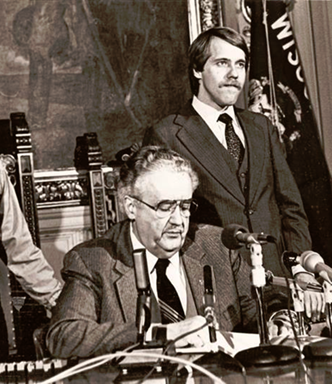

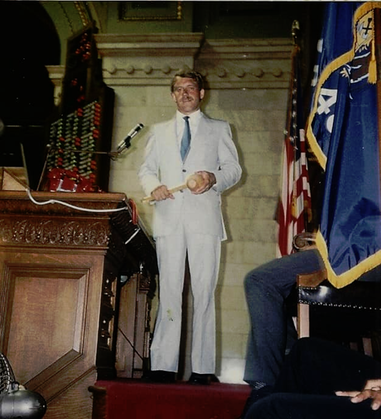



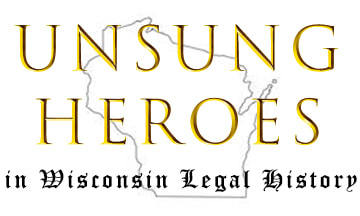
 RSS Feed
RSS Feed